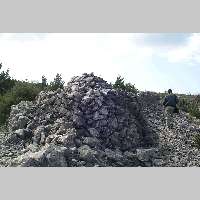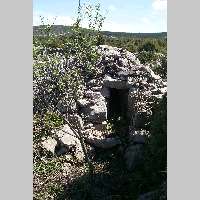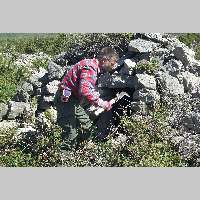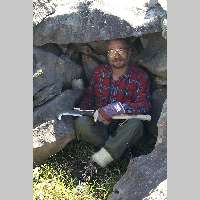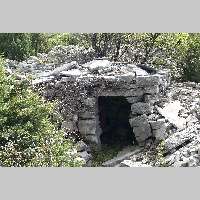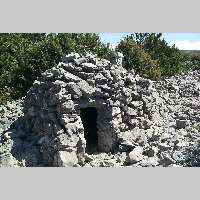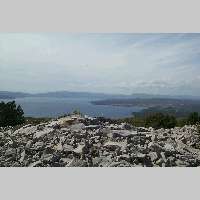

 dr Berislav Horvatic, Zagreb
dr Berislav Horvatic, Zagreb
Corbelled dry stone shelters (komarda/hramac) on the island of Krk
Beehive huts, round dry-stone shelters with corbelled roofs, are confirmed for the southern part of the island of Krk in Northern Adriatic and documented with photographs. On the average they are rather small and coarsely built, simple and modest in comparison with those in both Dalmatia (bunja) and Istria (kažun). Corbelling is crude, with relatively big stone slabs, producing rather flat domes. But for only two exceptions found so far, all entrances are with horizontal lintel stones. As a rule, the entrances face the climatically most favourable side, west or northwest, to avoid exposure to both the unpleasant winds (bora, sirocco) and strong sunshine. As regards the ground plans, neatly circular huts are rather exceptional. Most of them have more or less rectilinear interiors, possibly with rounded corners, even if they are circular in plan outside. This could possibly be ascribed to the strong influence of the rectilinear canon of the other type of dry-stone huts, on a rectangular base and with thatched gable roofs, coexisting with beehive huts and prevailing on the island as a whole. A more radical adaptation along the same lines seems to have yielded beehive huts rectangular in plan both inside and outside, as well as those with noncorbelled dry-stone roofs.
Dry-stone huts of any type are never found in the settlements or their immediate vicinity, as they were used only as shelters for farmers and shepherds away from home, never as sheds, pigsties or hen houses.
Za povecavo kliknite na sliko
Click on picture to enlarge




 dr Berislav Horvatic, Zagreb
dr Berislav Horvatic, Zagreb




